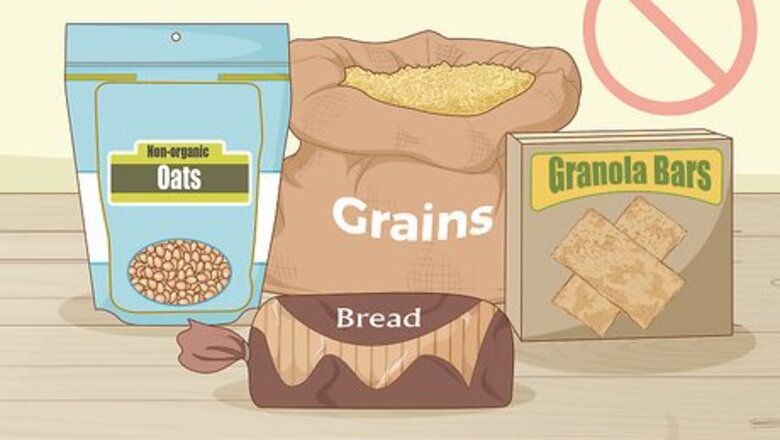
views
X
Research source
While the overall risk is still not known entirely, you can take steps to eliminate glyphosate from your diet. Do your best to avoid foods that have high levels of glyphosate, such as oats or soy, and look for foods that are free from any herbicides. If you have fresh produce, you can wash and rinse some of the contamination off to reduce the amount you’re eating. With a bit of work, you can cut out a majority of the chemical from your regular diet!
Cutting Glyphosate from Your Diet
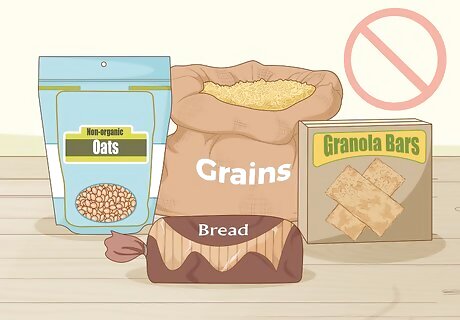
Avoid having non-organic oats and grains. Many farmers spray their oats and simple grains, like barley or quinoa, with glyphosate so they dry out more and get a better harvest. Check the label or packaging to see if the grain you buy is from an organic source since they won’t have any chemical treatments on them. If you can’t tell if a product is organic or contains glyphosate, then check online to see if there is more information on it. Glyphosate can be found in cereals, bread, oatmeal, and granola bars. Glyphosate isn’t listed in the ingredients section on processed foods, so your food may have trace amounts of glyphosate in it. The FDA and EPA have set maximum glyphosate levels for foods and produce so you aren’t exposed to dangerous levels. You do not need to get rid of any foods in your pantry that already contain glyphosate since most concerns are over long-term exposure.
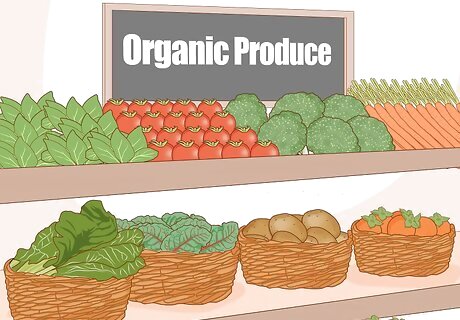
Buy organic produce to avoid any herbicides or pesticides. Even though farmers use glyphosates on a variety of produce, organic foods don’t use any chemical treatments to protect against weeds or pests. Shop from the organic section at your local grocery store so you can find untreated produce to use in your meals. Store any organic fruits and vegetables away from other fresh produce you have since the chemical could cross-contaminate one another. Some common produce that has glyphosate are soybeans, peas, carrots, sweet potatoes, and corn. There may be trace amounts of glyphosate in organic food due to wind-blown contamination. Organic foods tend to be more expensive than non-organic or processed foods.
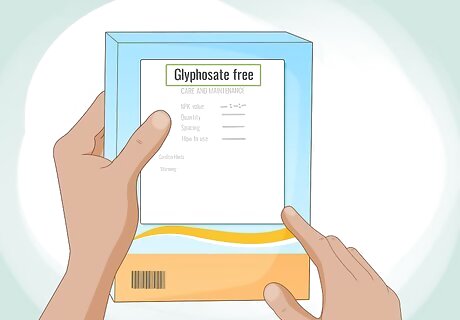
Look for foods labeled “glyphosate-free” to avoid any contamination. Some foods may be certified as “glyphosate-free” after the product is tested for contaminants. Inspect the packaging of the food you want to buy to see if they have the term “glyphosate-free” printed anywhere. If you find the certification on the package, then the food is safe to eat without any contamination from the chemical. If not, there still may be trace amounts of glyphosate in the food. You can also buy products labeled as “organic” or “non-GMO” since they won’t be treated with chemicals. There still may be trace amounts of glyphosate present if there was cross-contamination.Tip: If you buy your produce from a farmer’s market, ask what types of pesticides or herbicides they use so you can determine if the produce has glyphosate in it.
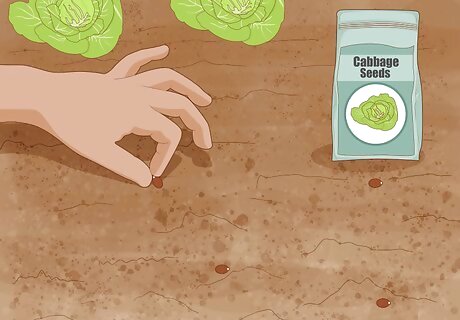
Try growing your own produce to ensure your produce is glyphosate-free. You can either grow the produce near a bright window in your kitchen or you can start an outdoor garden. Choose organic seeds or cuttings from organic produce you’ve already bought to start your produce garden. Take care of each of the plants so they can produce fruit and vegetables you can use without the risk of glyphosate contamination. Some simple things you can grow at home easily are tomatoes, salad greens, and herbs.
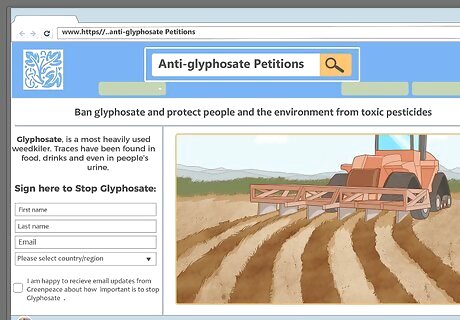
Support groups trying to ban glyphosate to prevent future contamination. Many advocacy groups are taking a stand against glyphosate and trying to ban it. Search online for anti-glyphosate petitions you can sign or foundations you can donate to so you can support them. Tell other people about glyphosate research and how it could affect them to get involved as well. Do research on glyphosate thoroughly before telling others about it so you don’t spread misinformation to other people.
Cleaning Contaminated Produce
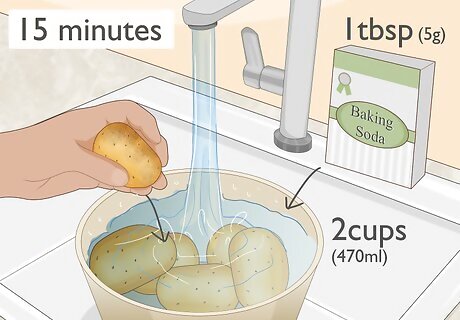
Wash produce in a baking soda solution for an effective cleaning method. Combine 1 teaspoon (5 g) of baking soda with 2 cups (470 ml) of cold tap water and stir them together until it’s thoroughly mixed. Put the produce you want to wash in the solution and let it soak for up to 15 minutes. The baking soda in the solution will help lift and remove any glyphosate residue from the produce so it’s safer to eat. Wash your fruits or vegetables even if they have an inedible outer layer, such as bananas or oranges. Glyphosate could stick to the outside and contaminate other items it comes into contact with. You can mix more of the solution if you need to. Always maintain a 1 teaspoon (5 g) to 2 c (470 ml) ratio so you don’t affect the flavor of the produce. You can also use a commercial produce-cleaning spray from your local grocery store if you want, though it may not be as effective as baking soda.
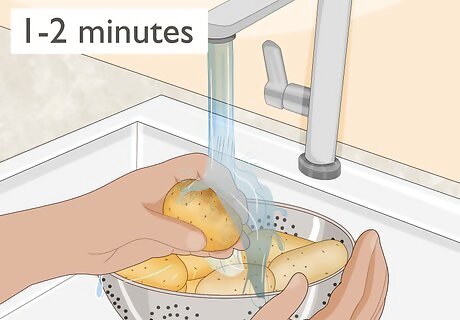
Rinse the produce under tap water to clean off the baking soda solution. Set a colander in your sink and pour the produce into it. Run clean water from your sink over the produce for 1-2 minutes, shaking and moving the fruits and vegetables around so they’re rinsed evenly. When you’re finished, turn off your faucet and shake out any excess water so they aren’t wet. Avoid soaking your produce to rinse it since the glyphosate residue may stay in the water and stick to your food.Tip: Use a vegetable scrub brush on your produce to help scrape off any dirt or contaminants still stuck on the surface.
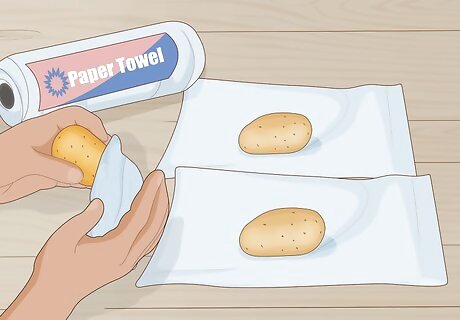
Dry your produce with a paper towel to remove any stuck-on residue. Take the produce out of your colander and dry it individually on separate paper towels. Wipe the produce completely clean to remove any leftover residue that might still stick to the surface. Set the dry produce in a bowl or container to store it so it doesn’t get contaminated by other unwashed items. Don’t use the same paper towel for different produce items since you may reapply the residue.
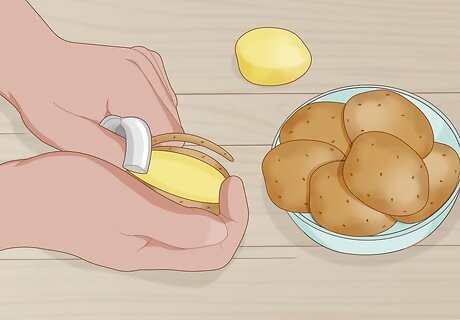
Cut off the outer layer of produce if you want to get rid of absorbed contamination. Glyphosate residue can absorb into the produce through the rind or peel so it still may be contaminated even if you wash it. Use a peeler or a knife to cut off the outer skin on the fruits or vegetables and throw the peels away to avoid any contamination risks.













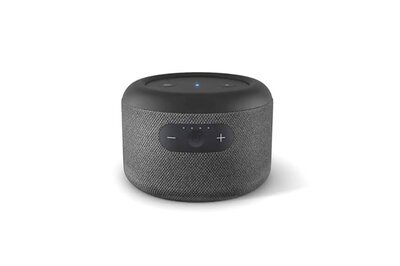




Comments
0 comment